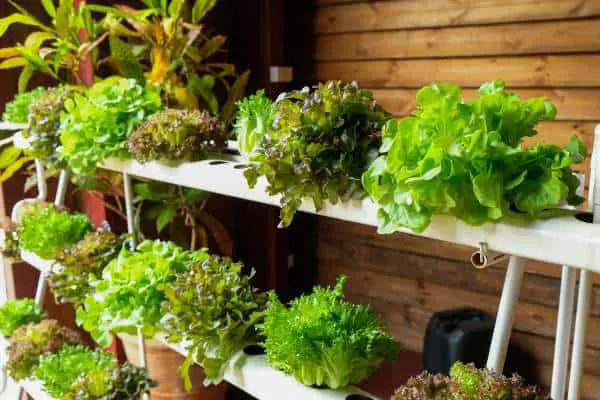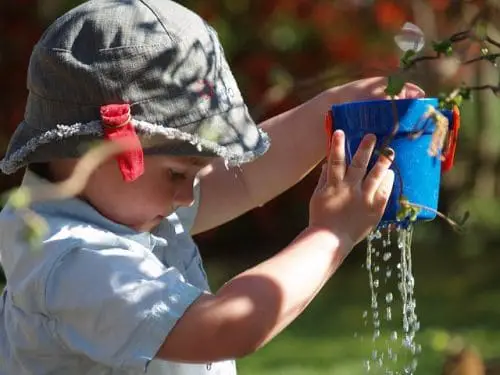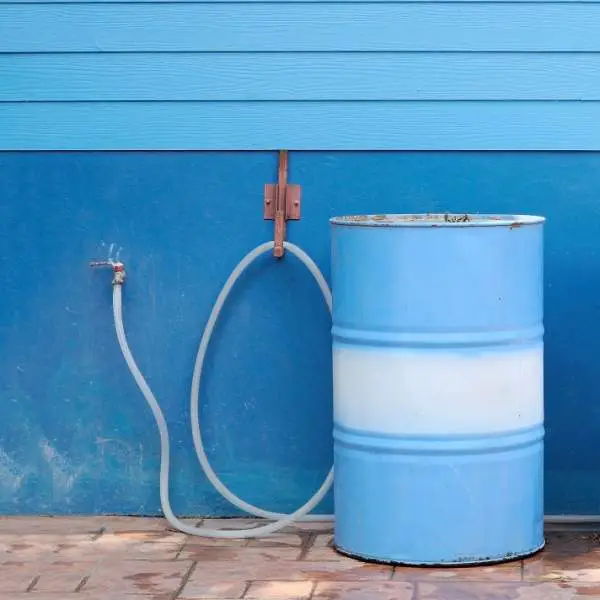Hydroponics can either be fairly simple or implicitly complex depending on how you choose to grow your plants and set up your system. That being said, there are some basic tenets that every hydroponic gardener needs to follow. Without these basic do’s and don’ts, no hydroponic system will be able to thrive, regardless of how it’s arranged. So without further ado, here’s the top 10 do’s and don’ts of hydroponics:
Do your research
But that’s what you’re here for right? So you’re already getting the first do of hydroponics right. Before you start your system, make sure you look at available system types and the kinds of maintenance and special considerations they require. For example, if you choose to use a Wick system you really don’t need a pump, but can choose to use one. If you choose a NFT or Ebb and Flow system, you’ll definitely need a pump. It seems like a small thing now, but it won’t be when you’re mid set up and realize you’re missing a critical component.
Decide on the kinds of plants you want to grow and make sure your system set up will support them. Then figure out what ideal pH and nutrient levels will be, in addition to the necessary temperature, humidity, and light requirements. Make sure you’re equipped to support your type of system’s water, electric, and monitoring needs too.
With research, comes planning. Set up your hydroponic system wisely and make sure it won’t be difficult to do water changes and maintenance as a result of a hasty set up. Allow enough space to account for potential future transplanting and make sure you’ve planned for your plant’s full growth size and weight to be accounted for.
Do make lighting a priority
Too many hydroponic gardeners have made the mistake of relying on natural sunlight because their growing area seems ‘pretty light’ to them. While we, as humans, may see a bright, airy room, there are factors important to plants that this superficial assessment doesn’t consider. And when you’re growing hydroponically, it can be easy to let water take focus and accidentally ignore lighting concerns. Even if your growing area is really light, you’re still going to need supplemental lighting. Period.
You’ll need to install special growing lights to either supplement natural light or completely provide your plant’s light. Growing lights can be fairly inexpensive and they come in a variety of options: LED, halogen, and HID. Make sure you place them close enough to the plants to be effective, but far enough away that you won’t have singed or wilting plants from the lights.
Pay special attention to plants that may be at risk of receiving less light. Plants in the corner, behind another plants, or that have been surpassed in growth by another plant, are more likely to suffer a light deficiency. That, in turn, means that the plant will suffer and fail to grow as well. You may have to adjust lighting in your system if you see that certain plants aren’t getting as much light as others.
Do change your water!
Seriously, change your water appropriately. It’s a big deal for the plants, as missing several water changes can lead to disease and chemical burns on plant roots. The key with this do, is to do it appropriately. Overchanging your water can be just as bad as under changing it.
So how do you change the water correctly? While different systems will run through water reservoirs and systems differently, and evaporate differently as a result, you can tweak your routine from this rule of thumb: When the water reservoir is visibly lower, add your treated, clean water to top it up, but keep a log of the amount. You’ll typically need to top up your water every few days or less. When the amount you’ve added reaches half the total amount of your reservoir capacity, drain half the water currently in the reservoir and replace it with fresh water.
Why should you be careful of overchanging your water? Because it can stress the plants and result in dramatic fluctuations in pH and nutrient levels.
You might be interested in:
How often should you change your hydroponic water?
Do monitor your system
Testing and monitoring your system isn’t just good practice, it alerts you of any water quality issues. That means if you read a sudden spike or drop in pH or nutrient levels, you can correct the problem before it negatively affects your plants. Daily pH and EC level tests will go a long way in preventing water quality issues.
How can you test and monitor your solution? There are plenty of options, so there’s no excuse not to do it. For pH testing, you can use strips or drop testing kits that grade pH in colors that you then compare to a chart included with the tests. Or, if you want to get a little techy, you can buy a digital pH monitor that you simply place into the water for a pH reading.
For testing nutrient levels, you’re actually testing the salt content (ion concentration) in the water that results from adding nutrients, and from evaporation that causes them to become more concentrated. The most common method of monitoring nutrient concentration is EC testing. EC, or electrical conductivity, raises and lowers with the level of nutrients (and their resultant salts), so you can use it as a measure to determine your nutrient concentration.
Like pH testing, you have a lot of options for how you test. The main ways to test also mirror those of pH testing. Because you have to test again and again, you may choose the route of most convenience: a combination testing meter that tests both pH and EC.
Yes, the ideal levels for pH and EC vary from plant to plant and across the various growing stages. Just for reference, the typical ideal levels are:
EC: Between 1.2 and 2.0
PH: Between 5.5 and 6.5
You might be interested in:
How to monitor your pH levels (Complete Guide)
Do make sure you understand your nutrient solution
Nutrient solutions can be either hand mixed or bought as a ready for sale mix. Either one is fine to use, but you need to understand some things about nutrient solution before you grab the first nutrient mix that catches your eye.
Different plants have different nutrient requirements to grow their best. You’ll see many nutrient solution mixes that are sold as just general ‘plant food,’ or that claim to be safe for all plants. While they may not destroy your plants, they may not be giving you the most growth for your dollar either. Hydroponic fertilizers are specifically designed to work with these systems, and the plants therein. They’re either sold as liquid concentrates or granules.
For the sake of simplicity (and to avoid the rabbit hole that can come from a very long talk about all nutrients and manual mixing), we’ll focus on NPK nutrients. NPK stands for N- Nitrogen, P- Phosphorus, and K- Potassium. These are the three main nutrients that plants need that they cannot obtain from water and oxygen. When you pick out your hydroponic nutrient solution you’ll see three numbers on the front.
You see a lot of different number combinations here, and it can get confusing quickly. Because plants need certain nutrient concentrations depending not only on the type of plant, but also the growing stage, there’s a lot of choice. Here are the basics of what you need to know:
The first number shows Nitrogen concentration, the second shows Phosphorous, and the third shows Potassium. The number shown indicates the percentage of the solution that is made up from said nutrient. The growing stage of your plants will have the greatest impact on the NPK ratios you need. Thankfully, most hydroponic fertilizers come labeled with their best use, so it’ll be easy to find the one you need.
Here’s another important thing (and a big don’t of hydroponics) to remember:
Don’t use regular fertilizer in your hydroponic system. Ever.
Why not? First, the fertilizer you get from the garden and hardware store is not going to dilute properly when it’s pumped through your system. Not only that, you can be doing serious damage to your system and equipment. Regular fertilizer can clog up your system and cause an even bigger nutrient delivery issue. It seems like a small thing now, but in the end it’ll be a pretty big deal if you destroy your equipment over a hasty fertilizer purchase.
Related reading
Can you use miracle-gro in a hydroponics system?
Don’t overplant
It’s easy to get excited and get carried away with planting, especially when you’re setting up a new system. In the excitement, you might end up with more plants than your system can sustain. Not only that, even if your system can handle the nutrient flow issues, the plants might not be able to handle the crowding. Yes, hydroponic systems can be much more space efficient that soil gardening, but that’s not an excuse to overfill your grow tray.
There are a ton of reasons that having too many plants can wreak havoc, but when it comes down to it, it’s just plain bad for the plants from top to bottom. First, you’re going to have issues with providing sufficient light to all your plants. When they’re crowded and leaves overlap too much, that’s just taking away from the covered plants that need as much exposed leaf area to absorb light as possible. Then, you’ll have to worry about roots tangling and creating blocks to critical nutrients which then, as you can guess, leads to dead or dying plants.
When you overplant, you also get yourself into situations where you may be mixing incompatible plants. While many plant types grow suitably well next to each other, you’re going to run into a problem if they have conflicting pH and nutrient ratio needs.
For example: if you’re growing mint (with a pH tolerance from 7.0 to 8.0) alongside sweet potatoes (with a pH tolerance from 4.5 to 6.0), you won’t be able to meet suitable pH levels for both, and one of the plants will suffer as a result.
Don’t neglect the growing environment
Beyond lighting, you need to pay special attention to your growing area. That means you can’t always rely on ambient temperature and humidity levels to fit the bill. Since you’ll have taken care of one of the first do’s (taking care of lighting), it won’t be a whole lot of extra work to maintain temperature, depending on your lights and how much heat they give off. Likewise, the humidity shouldn’t require too much work because, yes it’s a hydroponic system and you’ll be producing heat to maintain the needs of your plants.
While plants are going to have specific needs, the best ranges for humidity and temperature in hydroponics are:
Humidity: 40% to 70%, with 50% being optimal
Temperature: 65 to about 80 degrees, with most plants comfortable at about 77 degrees
You don’t need the fabled thermostat detector found in the minds of dads everywhere, but you do need to monitor the temperature regularly. For most growers (with plants that aren’t excessively sensitive to small temperature changes), that’s as easy as installing a thermometer or two in their growing area. Just check it once or twice daily to ensure temperature are in the appropriate range for your plants. If you’re struggling to keep the temperature up, a small space heater can be used as long as it isn’t too close to the plants and circulates heat evenly.
At night, it’s ideal to give your plants a lower temperature, just like they’d experience if grown outside in soil. You should aim to reduce the temperature by about 10 degrees for 12 hours at night.
To monitor your humidity, you can purchase a hydrometer. Alternatively, you can invest in a combination thermometer/hygrometer device. And increasing humidity in your growing area is no big deal either. In most situations you can use a cheap room humidifier, and that’ll be enough.
You also need to make sure your growing area gets plenty of ventilation. Ventilation not only helps prevent mold and fungi, but it also helps strengthen plant stems by causing gentle movement. Just as plants would strengthen through growing to resist the wind outside, they grow stronger with a little ventilated adversity. Really, an oscillating fan will do the trick for most systems.
Don’t put in unsuitable plants
Okay, most plants actually grow very well in hydroponic systems regardless of their sensitivity to and preference for certain conditions. But sometimes, there are plants that just plain aren’t going to work. Or they don’t work with the specifics of your system, available resources, or experience level. Don’t be stubborn about this one, either. Most plant species have variations that are more suited to hydroponic growth if the main species isn’t. For example: trees. No, you cannot grow a full size tree in a hydroponic system, nor should you try to. In this example, there are dwarf species that actually can be grown hydroponically. So be prepared to compromise.
Related reading
Can you grow Avocado in a hydroponics system?
Can Trees be grown hydroponically?
This don’t actually goes hand in hand with not over planting. Really, it’s about plants that fit your system, and fit well together.
Which means:
Don’t ignore your plants
Hydroponic systems offer a lot of advantages over soil gardening, but reduced plant maintenance isn’t one of them. Many a novice hydroponic gardener has had unhealthy or failing plants as a result of neglecting routine plant care. So that means you can’t let them run amok. You still need to trim and prune your plants. Remove dead leaves, stems, and flowers, cutting right below the head. When you need to remove stems, cut right before leaf nodes, and cut as close as you can to the main trunk when removing larger stems.
You also need to routinely observe your plants for any signs of distress, illness, or infection. If you’re doing it regularly, you’ll be able to catch potential problems before they destroy your plants and you won’t have to spend nearly as much time doing more in depth observations and later problem solving.
So how do you look for problems, and what are you actually looking for when you do?
Try and do a methodical observation. Whether observe then top down or bottom up, be consistent and systematic. Most people start at the roots, but whichever you choose is fine. For the purposes of this example, we’ll start there. Make sure the roots aren’t strangling each other, first of all. Then, make sure you don’t see abnormal discoloration or dry, withered spots on the roots. Roots are most susceptible to bacterial and fungal infections, so make sure you don’t see any signs (visible fungi, fuzzy appearance) beginning on the roots. Healthy roots are a pearly white color; discoloration is often a sign of impending issues like root rot.
Then, inspect the stems. Does the stem look thinner or weaker in some spots? Is the color uniform? Look for inconsistency in the stem thickness and coloring.
Now to the leaves. Leaves are often the first thing growers notice when plants aren’t doing well. Make sure you look at the leaves of all your plants. Don’t just inspect one plant, see that it’s healthy, and call it a day. Check the leaves for drooping, discoloration, dryness, visible lesions, and abnormal curling.
Any of the above mentioned symptoms can indicate much larger problems, so you need to take steps to figure the cause and correct it as quickly as possible.
You might also be interested in:





